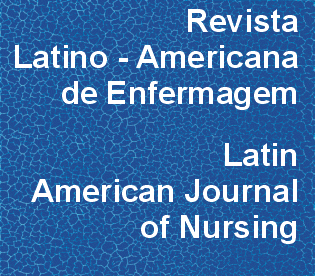Capacidade para o trabalho na enfermagem: relacao com demandas psicologicas e controle sobre o trabalho
DOI:
https://doi.org/10.1590/0104-1169.3072.2367Resumo
OBJETIVO: avaliar a associação entre demandas psicológicas, controle sobre o trabalho e a redução da capacidade para o trabalho em trabalhadores de enfermagem. MÉTODO: estudo transversal, envolvendo 498 trabalhadores de enfermagem de um hospital universitário do Estado do Rio Grande do Sul, Brasil. A coleta de dados foi realizada em 2009, utilizando-se as versões brasileiras do Índice de Capacidade para o Trabalho e da Job Stress Scale e, para a análise dos dados, modelos de regressão logística. RESULTADOS: evidenciou-se prevalências de 43,3% e de 29,7% de redução da capacidade laboral e de alta exigência no trabalho (alta demanda psicológica e baixo controle), respectivamente. As chances de os trabalhadores em alta exigência apresentarem redução da capacidade para o trabalho foram maiores e significativas quando comparados aos classificados em baixa exigência, mesmo após ajustes por possíveis confundidores, exceto idade e sexo. CONCLUSÃO: constatou-se elevada prevalência de redução da capacidade laboral. A evidência alerta para a necessidade de investigação e análise detalhada dos aspectos psicossociais, relacionados ao processo de saúde/adoecimento dos trabalhadores de enfermagem.Downloads
Downloads
Publicado
2013-12-01
Edição
Seção
Artigos Originais
Licença
Os direitos autorais são de propriedade exclusiva da revista, transferidos por meio da Declaração de Transferência de Direitos Autorais (presente no Formulário Individual de Declarações) assinada pelos autores. Para a utilização dos artigos, a RLAE adota a Licença Creative Commons, CC BY-NC Atribuição não comercial (resumo ou código completo da licença). Com essa licença é permitido acessar, baixar (download), copiar, imprimir, compartilhar, reutilizar e distribuir os artigos, desde que para uso não comercial e com a citação da fonte, conferindo os devidos créditos autorais a Revista Latino-Americana de Enfermagem. Nesses casos, nenhuma permissão é necessária por parte dos autores ou dos editores.Como Citar
Capacidade para o trabalho na enfermagem: relacao com demandas psicologicas e controle sobre o trabalho . (2013). Revista Latino-Americana De Enfermagem, 21(6), 1298-1305. https://doi.org/10.1590/0104-1169.3072.2367



